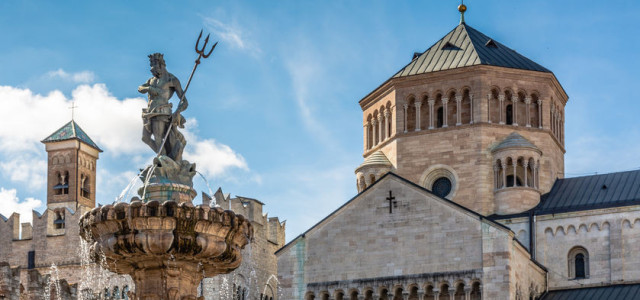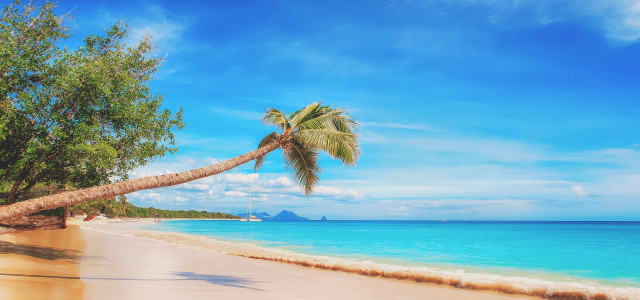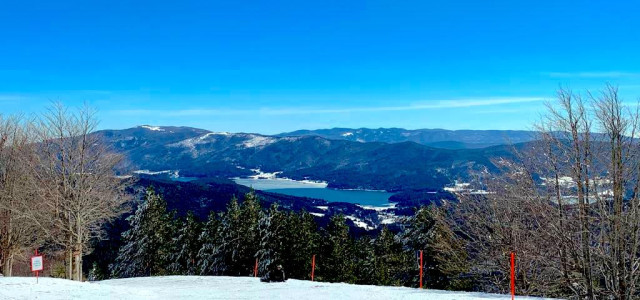Taking a Vacation in Palermo: history, sea and mystery
Spending your holidays in Palermo means treating yourself to a cosmopolitan experience in a city that is the link between the East and the West, a perfect synthesis of the different Mediterranean cultures: Palermo and its thousand-year history are in fact among the UNESCO sites of the "Arab-Norman Palermo and the Cathedrals of Cefalù and Monreale ". But spending your holidays in Palermo also means the sea, traditions, events and great food!
Summary
From Balarm to the Normans: a journey to a Mediterranean capital
Our holidays in Palermo begin with the discovery of the Arab-Norman part of the city. Its beauty and its elements apparently combine opposing worlds whose artistic and architectural imprints embellish every corner of this fascinating Mediterranean capital.
The Arab-Islamic and the Norman-Catholic styles collide and meet each other in a seamless weave. They are able to tell you tales that are centuries old during a walk through the center where even the street names are written in three languages: ( Italian, Arabic and Hebrew).
One’s holiday in Palermo follow the itinerary according to the UNESCO Sites: we start with the Palazzo dei Normanni and its dazzling Palatine Chapel; onto the Cathedral which houses the tombs of the Norman kings and the chapel dedicated to the patron saint Santa Rosalia; we move along to the red domes (qube) of San Giovanni degli Eremiti and San Cataldo; up to the wonderful Church of Santa Maria dell'Ammiraglio, better known as “Martorana".
Just outside the city we can find the Castello della Zisa (which comes from the Arabic al-'Azīza, "the Splendid”) that summarizes the elements of the Arab-Norman style according to the taste of William I. He wanted those arabesques and the “genoardi" which are the sumptuous gardens which imitate heaven on earth all for himself.
A tour of the historic markets: Ballarò, Vucciria, and Il Capo
In order to get to know the authentic and popular soul of the city, your holiday in Palermo must include a nice tour through the historic local markets: Ballarò, Vucciria and Il Capo, are the three main ones.
Located at the heart of the Albergheria district, the historic Ballarò market extends from Piazza Casa Professa to the ramparts of Corso Tukory in the direction of Porta Sant'Agata. It is famous for the sale of the freshest fruits that arrive from the countryside of Palermo. Ballarò is the oldest of the city's markets.
Frequented by hundreds of people and animated by the characteristic “abbanniate” which are the boisterous calls of the vendors - Ballarò offers Palermo and its tourists a varied cross-section of stands that exhibit typical products of the local cuisine and street foods: boiled or baked onions, panelle (chickpea flour fritters), crocchè or cazzilli (potato croquettes), octopus, quarume (veal entrails) and the unmissable sandwich with meusa (spleen)
Vucciria, whose name probably derives from the French "boucherie" (butcher) was initially the market destined for the slaughtering and sale of meat. Later it became a market for the sale of fish, fruit and vegetables. In this neighborhood you can admire Palazzo Mazzarino, the Fontana del Garraffello, and Palazzo Gravina Filangeri di Rammacca. Today this location is also one of the references of Palermo’s nightlife: there are many clubs where you can have a drink and listen to music until the wee hours of the night.
Il Capo is the third food market where the colors and the "vuci" of the sellers are an integral part of the local folklore: it is open every day and it extends along via Carini and Beati Paoli, and also along via di Sant'Agostino and via Cappuccinelle.
The sea of Palermo: Mondello and Isola delle Femmine
You can't really talk about your holiday in Palermo without a taking a dip in the crystal clear sea of Mondello. It is a residential coastal district renowned for its sandy beaches that are equipped with all the right amenities and services for water sports lovers.
Mondello is also a lively area characterized by buildings in Art Nouveau style and animated by kiosks and restaurants that flank the seafront and the former fishing village of Mondello Paese. The nearby Capo Gallo Reserve is a paradise consisting of hiking trails and sweeping views of the sea.
Isola delle Femmine is a town located near Capaci and takes its name from the island with the same name where ancient legends chase one another:
according to the most popular folk tradition, the tower that stands on the top was a female prison; some historical sources argue that "Insula Fimi" derives from the distortion of "Isola di Eufemio” instead - which is a reference to the general Eufemio di Messina who was the Byzantine governor of Sicily.
Palermo’s mysterious underground
Like any respectable ancient capital, Palermo also has a hidden and mysterious facade made up of highly suggestive underground paths. It is unmissable stop for those who plan their holiday in Palermo.
A mandatory stop for historical thrill lovers is definitely the following: the Catacombs of the Capuchins. Palermo is known throughout the world for the presence of a vast cemetery in its basements,. The galleries were excavated at the end of the 16th century and are divided into a large rectangular complex.
The bodies that are present are around 8,000 and include standing mummies, ones that are lying down, and fully dressed ones that are separated by gender and social category. Most of those buried there belong to the upper classes due to the cost of the embalming process. In the various sectors we can see prelates, merchants and bourgeois in their "Sunday" clothes, army officers in gala uniforms, young women in bridal gowns, family groups that stand upon tall shelves, and children.
The subterranean Palermo also includes the typical qanat which are the burrows of Arab origin. They are an integral part of the ancient water supply system which consisted of intercepting and transporting the water from the springs to the inhabited and cultivated areas by exploiting a clever system of slopes.
The intricate network of galleries ran under Via Nave and Corso Calatafimi during the time of the Arab domination of the royal garden. You can book a guided tour of the qanat and experience speleologists in complete safety, thus discovering the most hidden face of Palermo. What do you need to bring? Rubber boots, a waterproof jacket, a harness and helmet with a flashlight: you will travel about 15 meters below ground where the atmosphere becomes really surreal.
All rights reserved © Copyright Altrama Italia
![Immagine descrittiva - BY [lachris77/123rf] Immagine descrittiva - BY [lachris77/123rf]](https://api.viaggiart.com/resources/images/xl/list/image/171278-d9ee752eb03a9e621041bfe3b8749df3-1561445691.jpg)







